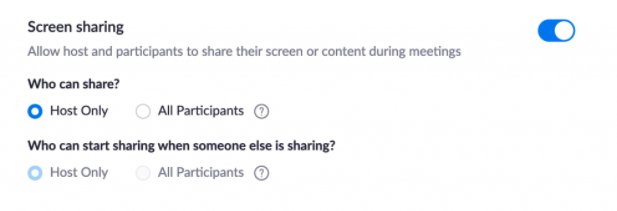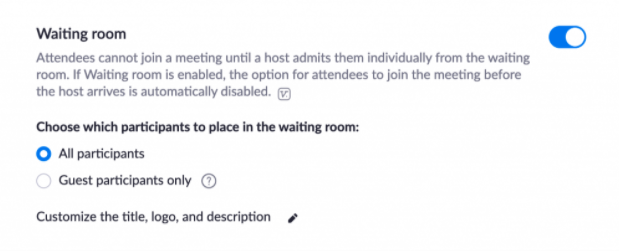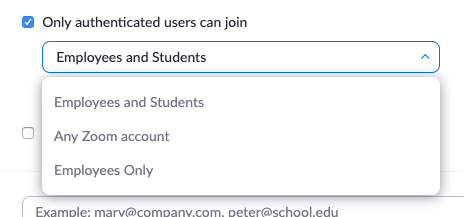Posts
Preventing “Zoombombing”
Written by on
With the increased usage of Zoom to deliver content to our students, there has also been an increase in “Zoombombing”. Zoombombing means that uninvited guests attend your Zoom meeting without your knowledge which can cause significant interruptions.
Settings
Open your SMCCD Zoom Account and navigate to the “Settings” page under “Personal” in the navigation bar.
On the Settings page, please make sure that the following options are toggled correctly:
- Join before host – OFF
- Mute participants upon entry – ON
- Private chat – OFF
- File transfer – OFF
- Screen sharing – ON with “Host Only”
- Disable desktop/screen share for users – ON
- Annotation – OFF
- Remote control – OFF
- Allow removed participants to rejoin – OFF
- Waiting room – ON
- Authentication Profile – ON
To better understand what each of the settings does within Zoom, ITS recommends reviewing each of the settings below.
Join before host
The participants could be having a party without you there to monitor.
Recommendation: Turn off

Mute participants upon entry
Barking dogs and crying babies can take over your meeting unintentionally. So can the participant who is singing their favorite heavy metal song at the top of their voice.
You might also consider disallowing participants to unmute themselves. In that case, participants can use the “Raise hand” feature or the chat room to indicate when they want to speak. You can manually unmute them.
Recommendation: Turn on

Private Chat
The chatroom is one of the key ways to get live feedback and participation with your participants. We want to see all the communication that is happening. Disabling private chat will help tamp down any possible bullying or harassment during your meeting. They can use discord or text messages if they need a backchannel.
Recommendation: Turn off

File transfer
The ability to send files to your participants is very handy for you. Not so helpful if the participants are sending inappropriate (even unintentionally) files/gifs/images to the group. Put your files on Dropbox, 3C Media, Google Drive, etc. and give them download links.
Recommendation: Turn off

Screen sharing
Your company department meeting is a great place for colleagues to share their business work with the group. Your classroom might not be. Participants can take over the session share and put anything they would like on-screen for all in attendance. You can make a participant a co-host if you would like someone else to share their screen.
Recommended: Turn on “Host Only”

Disable desktop/screen share for users
We don’t need to see the personal photos and information of your co-host when they share. This setting will enable them to share an Application (Powerpoint, Firefox, Chrome, Powershell, etc.) only. You should consider only sharing applications yourself.
Recommendation: Turn on

Annotation
Annotation gives you the ability to “draw” over the screen. It also gives that to your participants. They can draw anything that comes to mind over your presentation, your face, or anything else.
Recommendation: Turn off

Remote control
This is a handy support feature in a 1:1 session. You don’t want participants constantly requesting remote control of your desktop during meetings.
Recommendation: Turn off

Allow removed participants to rejoin
When you kick someone out of your meeting for any reason, they shouldn’t be able to come back.
Recommendation: Turn off

Waiting Room
This is perhaps the most useful feature to help control your meeting or classroom. All participants will enter the waiting room before joining the main session. This allows you to let participants in as you are ready to receive them.
Recommendation: Turn on and customize

Authenticated Users
Authentication profiles, allow hosts to restrict participants who can join a meeting or webinar to those who are logged into Zoom, and even restrict it to Zoom users who’s email address uses a certain domain.
If a participant tries to join the meeting or webinar and is not logged into Zoom, or logging in with the specified email domain, they will receive the following message:

Recommendation: Turn on and configure
